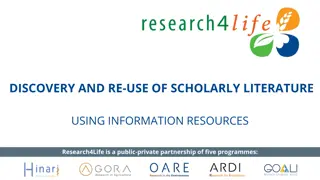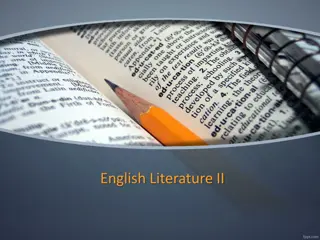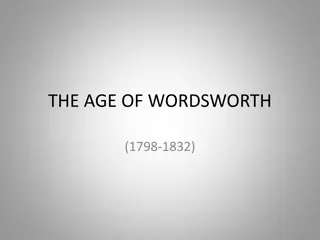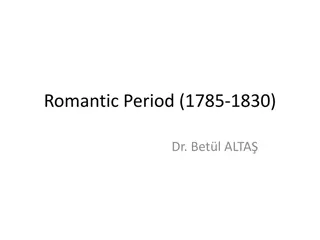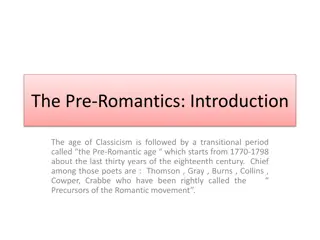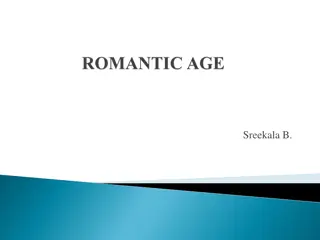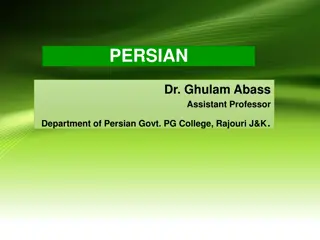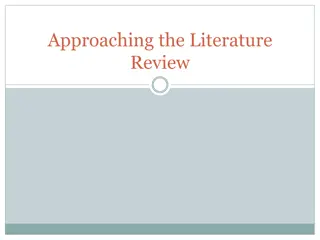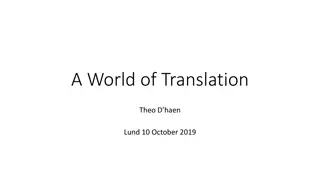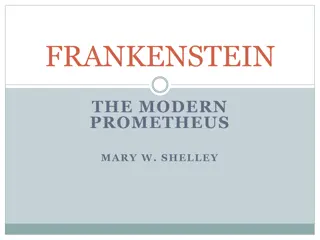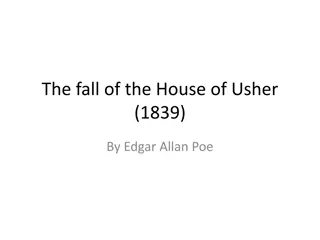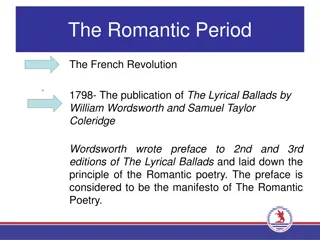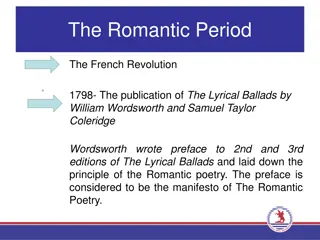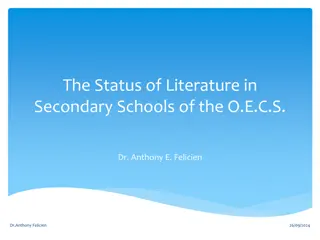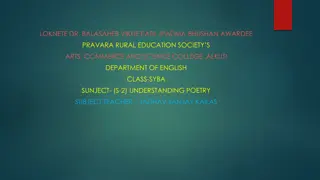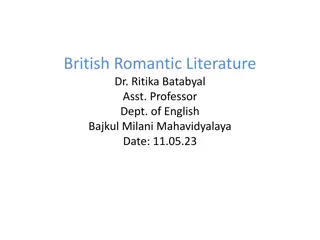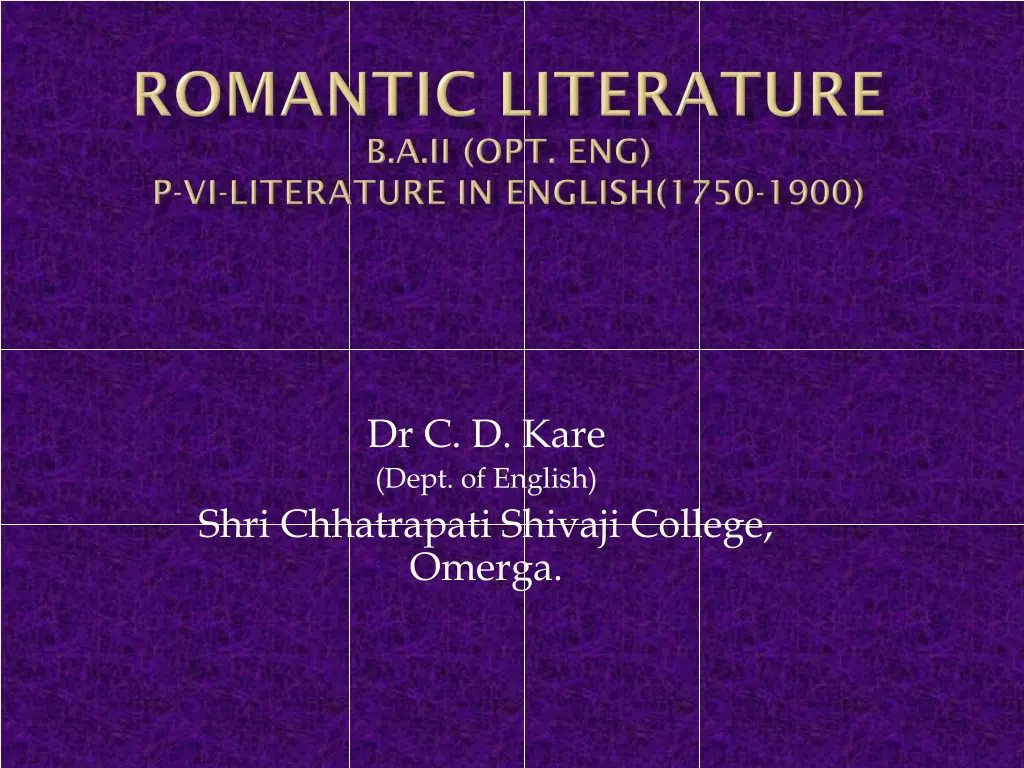
Exploring Romanticism: An Overview of a Literary Movement
Delve into the world of Romanticism, an artistic and intellectual movement that emerged in England in the late 18th century. Discover the key features of Romantic literature, including its emphasis on emotion, imagination, nature, and the Middle Ages. Learn about prominent Romantic poets and their contributions to this influential literary period.
Uploaded on | 0 Views
Download Presentation

Please find below an Image/Link to download the presentation.
The content on the website is provided AS IS for your information and personal use only. It may not be sold, licensed, or shared on other websites without obtaining consent from the author. If you encounter any issues during the download, it is possible that the publisher has removed the file from their server.
You are allowed to download the files provided on this website for personal or commercial use, subject to the condition that they are used lawfully. All files are the property of their respective owners.
The content on the website is provided AS IS for your information and personal use only. It may not be sold, licensed, or shared on other websites without obtaining consent from the author.
E N D
Presentation Transcript
Dr C. D. Kare (Dept. of English) Shri Chhatrapati Shivaji College, Omerga.
Introduction: Romanticism was, also known as a romantic age, an artistic ,literary and intellectual movement that originated in England towards the end of the 18th century. This romantic movement-Victor Hugo calls liberalism in literature which mean severy one has a right to utter his thoughts in his own way. Romanticism is characterized by its emphasis on emotion and Imagination. The publication of Lyrical Ballads, a collection of poems, in 1798 laid the foundation of the romanticism. Lyrical Ballads is a joint venture by William Wordsworth and S T Coleridge. Lyrical Ballads contain Wordsworth s famous definition of poetry as the spontaneous overflow of powerful feelings. Major Poets: William Blake, William Wordsworth, S T Coleridge, P B Shelley, Lord Byron and John Keats.
Features of Romantic Literature: 1) Reaction against the Neo-classical Poetry: The romantic movement is always marked by a strong reaction against the bondage of rule and custom. Head vs. heart- Neo-classical poetry appealed to reason while romantic poetry has an emotional appeal. Setting:-They set their poetry in urban life i.e. clubs or coffee houses while the romantics depicted the real life of Country side i.e. rural area. Characters:-The neo-classical poets characters were from upper class and aristocratic society while Romantics depicted the common people working in the farm like a solitary girl, farmer, or a shepherd . Poetic diction: Poetic diction was gaudy and artificial by using heroic couplet which was recognized as the only medium of expression. The Romantics used only the simplest language really used by men.
Love of Nature: Romantic poets had deep affection for nature. All romantic poets had sincere love of nature . Among them Wordsworth is the greatest nature poet. He gave to nature a high status as an independent status. He became the worshipper of nature. He saw God in nature. That s why he is called a pantheist. For them nature should not be seen scientifically but as living force. Beauty is truth and truth beauty is the poetic philosophy of this age.
Emotion and Imagination: The essential qualities of romantic poetry are emotion and imagination. In romantic poetry reason and intellect were subdued and their place was taken by imagination, passion and emotion. For romantics poetry should originate from souls. Black considered imagination as the means through which man could know the world. The imaginative power of the romantic poets leads them to mysticism. With imagination they wanted to enter the unknown world.
Interest in the Middle ages: Romantics were fascinated by medieval life and legend. Their love of the supernatural led them to an exploration of the middle ages. Some romantics were fed up with the materialistic life of their age and they sought to escape into the world of nature. They lay their scenes of their poems in the middle ages, with their marked propensity for magic, witchcraft and superstition. The poets turned to the remote places and distant times.
Hellenism: The word Hellenism is derived from the word Hellence which means Greek . It stands for the ancient Greek culture and fine arts ( poetry, music, painting sculpture and architecture. John Keats, P B Shelley and Lord Byron are Hellenists because they propagated Greek Culture through their poetry.


